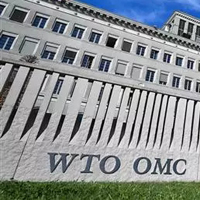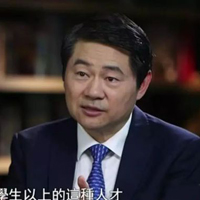- 当前位置:
- 首页>
- 活动>
- ������������
������������
CCG持续关注国际关系议题,推动中国与全球化的发展,积极开展国际交流,充分发挥智库“二轨外交”作用,在巴黎和平论坛、达沃斯世界经济论坛、慕尼黑安全会议等重要国际政策与意见交流平台上组织分论坛、边会、圆桌会议、晚宴等活动,促进国际政商学界对话,凝聚共识;CCG积极与各国政界、智库界、工商界开展“二轨外交”活动,每年常态化赴多国调研与交流,促进中外关系攸关方互动,保持与多国政策圈层的沟通渠道。
-

【Global Times】Wang Huiyao: WTO reform deemed both imperative and beneficial
By Wang Huiyao, president of the Center for China and Globalization(CCG)Over the past 20 years, the WTO has played a critical role in the economic development of nations all over the world, and has been the primary impetus for economic globalization. However, for more than a decade now, the development of the WTO has stagnated due to irreconcilable differences between developed and developing countries. This can be seen in the demise of the Doha Round of talks. With WTO talks deadlocked, the current US administration has adopted an increasingly negative attitude toward the institution, choosing to abandon multilateralism and instead relying on bilateral talks to resolve trade issues. Furthermore, US President Donald Trump has repeatedly threatened to pull the US out of the WTO. These developments constitute an unprecedented challenge to the multilateral trading system that has done so much to reduce trade barriers and promote the spirit of free trade since World War II. In addition to the stalled WTO agenda, it is apparent that the WTO has not kept up with important new developments and trends in the global economy, such as the explosive growth of the digital economy. By only focusing on conventional trade issues such as trade in goods and tariffs, the WTO has failed to develop frameworks that can accommodate new emerging sectors driven by information and digitization. It is all too apparent that the current WTO is outdated and not in tune with important new aspects of the global economy. However, while the WTO currently faces a series of significant problems, we do not believe that either developed or developing countries want to completely discard the current system and start all over again. Even Trump’s tough stance of repeated threats to leave the WTO - without actually following through on such threats - should be seen as part of his particular approach to "the art of the deal."On top of the fact that WTO principles and its framework are still recognized around the world, there is still no institution that would be able to replace it. The process of the WTO’s development has shown that the healthy and sustained development of world trade and the operation of multilateral mechanisms still depend on the functioning of the WTO. In light of this, there are certain recommendations that could be offered for the WTO’s reform, covering both broad principles and practical actions. First, the WTO should reaffirm its basic principle, which is to promote market openness and fair trade in order to realize the free movement of goods. At present, the most pressing problem is the trend for certain members to turn toward unilateralism, neglecting the WTO’s basic principles. Second, the current deadlock in appointing judges to the WTO dispute resolution mechanism must be resolved. The dispute settlement body is virtually paralyzed due to the US continually blocking appointments of new judges. The dispute resolution mechanism is also beset by several other problems, including the fact that some rulings transgress the scope of WTO rules. Also, statements and rulings are often too long, and settlement processes tend to be long and drawn out. Third, the WTO’s consensus principle needs to be reformed. More use could be made of plurilateral agreements as opposed to multilateral agreements in order to enhance the efficiency of negotiations and subsequent implementation. Due to the continued divergence between different members’ requirements, WTO talks have reached a critical phase tied to core and sensitive interests. Given that disputes between developed and developing nations are intensifying about various issues - such as agriculture, trade in services, intellectual property and technology transfer - solely relying on the universal consensus decision-making model will easily lead to deadlock. Fourth, WTO reforms should fully take into consideration the needs and capacities of developing countries, with utmost efforts made to find points of mutual benefit for all sides. Dealing with technology transfer will be an important component of the WTO reforms. Moreover, given the difficulty of achieving a consensus among a large number of WTO members, a group of key nations representing the voices of both developed and developing nations could work first to reach an agreement on the most crucial issues. To support the WTO reform process, a concrete time schedule should be designated, with accompanying tests and standards to ensure progress. During this phase, it is also important that WTO members maintain an open and active approach to reform. From Global Times,2018-11-11
2018年11月13日 -
Qiu Yufeng: Innovation integrates security, intelligence leads the future
By Qiu Yufeng, executive committee member of Center for China & Globalization(CCG), founder and CEO of Zorpia Robot Co.Today, scientific and technological revolutions and industrial changes are on the rise all over the world. The EU has launched a "data-driven economy" strategy to seize opportunities of big data development. China has also made a strategic decision to build a digital China. "Innovation integrates security, intelligence leads the future" is the theme of China-EU digital technology cooperation.China has made significant achievements in its digital construction. According to the Digital China Construction and Development Report (2017) issued by the Cyberspace Administration of China, the country's digital economy reached 27.2 trillion yuan in 2017, growing 20.3 percent year-on-year, accounting for 32.9 percent of its GDP, and ranked second globally.The new generation of information technologies represented by AI, robotics, 5G mobile communication, internet of things (IoT), and blockchain have accelerated the breakthroughs in applications to become the core driving forces of digital technology in China. In 2017, China rose to No 22 in the Global Innovation Index jointly released by the World Intellectual Property Organization, Cornell University and INSEAD, becoming the only middle-income country to enter the top 25 list. However, there is an acute shortage of talents and high-skilled personnel. Europe is among the leaders in digital technology innovation. For instance, in terms of AI, Europe is recognized as home to prestigious world-class universities and research centers, with at least nine ranked among the top 25.In March this year, the European Political Strategy Center, European Commission's in-house think tank, released a report titled "The Age of Artificial Intelligence: Towards a European Strategy for Human-centric Machines" which analyzed the current challenges facing Europe. In 2017, only 4 percent of global data was stored in the EU and only 25 percent of large companies and 10 percent of the small and medium-sized enterprises use big data analysis. In most EU member countries, data scientists make up less than 1 percent of total employment. In contrast, China has become one of the largest and most diverse data source countries, having accumulated a wealth of data resources. The number of Chinese internet users exceeds 800 million, mobile phone users exceed 1.3 billion, ranking first in the world. In 2017, the monthly mobile internet access traffic per capita reached 1775MB on average, which provides a fertile source for global research.In the digital technology revolution, China and the EU are facing many common and different challenges, which have huge potential for cooperation. For example, China has proposed the "Internet Plus", aiming to construct a public service supportive platform and promote the integration of the Internet and manufacturing industries.With the 5G era approaching, the prospects of the IoT are refreshed once again, becoming an important scenario of 5G applications. According to IDC data, by 2020, the global market for IoT will reach $1.7 trillion and grow at an annual compounded rate of 16.9 percent. Under this trend, China's IoT industry will grow to exceed 1.5 trillion yuan by the end of its 13th Five-Year Plan (2016-20). In 2019, China's cloud computing industry will be 430 billion yuan ($62.02 billion) in scale.China also aims to enhance international cooperation in the digital economy. This year, China released the new version of its AI development plan, with a focus on accelerating the integration of artificial intelligence and economic society. In March this year, the EPSC's report clearly stated that Europe should create a framework to support AI investment and set global quality standards for AI to meet internal and external challenges. China and the EU can improve the joint research mechanism through cooperation projects, and fund joint research and exchanges to jointly meet global challenges.China puts equal emphasis on development and security. The EU has made good progress in advanced data protection technologies and issued the EU General Data Protection Regulations (GDPR) in May this year.Taking AI and robots as an example, one of the big challenges is how to make AI available to human uses for extending thinking, memory, judging and handling things. The Chinese Ministry of Science and Technology has written relevant contents into a new plan to explore and establish international standards for what people can develop, what is bound by the ethics of science and what to refrain from.China and Europe have carried out active cooperation in this regard. To address the core issues of robot and AI security, a robotic blockchain program named "MPC" initiated by late British scientist Stephen Hawking has been completed by more than 10 academicians and experts from China, Europe and other countries. The goal of the program is to use blockchain as the cornerstone to establish the global robot security consensus charter for efficient monitoring and management of robots for safety and security of robot uses. In its promotion for consensus, the program has got support from EU countries, especially from renowned robot companies such as KUKA, ABB, and COMAU from countries such as Germany, France, Sweden, Switzerland, Finland and Italy.China understands innovation is in essence talent-driven. At present, China still has a shortage of high-level innovative talent, especially of leading scientists and technologists. Sino-European talent cooperation could be a key focus. In 2017, the Ministry of Science and Technology of China launched a guidance on promoting foreign scientists' participation in China's national science and technology plans, exploring a new model for opening-up and cooperation by gathering global innovative talents.Europe is currently a cradle for innovation and entrepreneurship by high-end talents. China and Europe can work together to bring global innovative talents to international scientific plans and projects, promote openness, cooperation and sharing of large-scale research infrastructure and facilities, scientific data, and other resources.China and Europe have signed the Sino-EU Science & Technology Cooperation Agreement, under which projects combining study, research and production can be carried out jointly. China and the UK also signed an MOU on science, technology and innovation cooperation in December 2017.With globalization encountering protectionism, and multilateral trade regimes and rules facing challenges, China and Europe should release positive, clear, and strong signals on major issues such as global governance and cooperation of science and technology. China-Europe cooperation can create solid conditions and a long-term vision for a shared destiny for humankind.From China Daily,2018-11-9
2018年11月12日 -

凤凰卫视《问答神州》专访CCG理事长王辉耀
【视频观看】 2018是中国改革开放的四十周年,在全球化的浪潮里,中国既与世界形成了资源互通,也不可避免地面临着来自于贸易壁垒的挑战。 回顾过去的这两年,在一连串的小概率事件成为了现实之际,有评论就认为,“黑天鹅”乱舞的背后反映出的当前全球化动力从强转弱,进入了阶段性的调整期的现实。 在“逆全球化”之声愈演愈烈之际,全球经济经何去何从?开放的中国又在其中扮演着什么样的角色? 凤凰卫视《问答神州》与您相约全球化智库(CCG)理事长王辉耀。文章选自凤凰卫视,2018年11月10日
2018年11月12日 -
王辉耀:提升中国对外投资的质量和效益
本文为全球化智库(CCG)主任王辉耀评论文章,文章刊发于2018年11月11日《 北京青年报》第A2版 作为世界第二大经济体,中国对于世界的贡献率逐渐上升。中国已成为“世界工厂”,中国企业通过“一带一路”倡议等渠道积极“走出去”,在贸易保护主义抬头的形势下,中国对外投资成为推动经济全球化,拉动世界经济增长的重要力量。中国企业“走出去”需要做好持续优化和提升,以更好地体现对外投资对中国以及世界经济的拉动作用。 整体上看,近年来中国企业的对外投资呈现平稳态势。2017年,中国企业对外投资因世界投资趋势变化而有所波动。联合国今年6月发布的《世界投资报告2018》显示,2017年全球外国直接投资下降23%,降至1.43万亿美元;2017年中国对外投资额度减少了36%,降至1250亿美元,位居美国和日本之后,为全球排名第三。 中国仍然是发展中国家中最大的吸收外资国和对外投资国。商务部发布的前三季度中国对外投资合作数据显示,2018年1月至9月,中国境内投资者共对全球155个国家和地区的4597家境外企业进行了非金融类直接投资,累计实现投资820.2亿美元,同比增长5.1%。联合国贸易和发展会议发布的《全球投资趋势监测报告》显示,今年上半年全球外国直接投资总额约4700亿美元,较去年同期下降41%,整体水平处在历史低位。 在当前一些国家对外国投资监管趋严、全球外国直接投资下降的背景下,中国稳定的对外投资成为全球经济发展的“稳定器”。中国企业“走出去”不仅实现了与东道国互利共赢、共同发展,惠及所在国民众,还为打破贸易保护主义,促进全球自由贸易贡献了力量。 中国对外投资快速发展,是中国经济发展到一定阶段的必然产物。最高领导层多次强调,中国开放的大门不会关闭,只会越开越大。中国企业“走出去”与全球经济紧密联系在一起,推动经济全球化,向世界表明了中国推动高水平对外开放的鲜明态度和坚定决心。中国企业“走出去”,有助于中国企业利用全球资源,立足全球市场,扩大全球视野,帮助中国进行未来投资和贸易布局;有助于中国企业加快市场转型,在参与国际市场中提高国际竞争力,同时促进中国在国际社会的参与程度,扩大中国的国际话语权。 企业作为对外投资的决策和实施主体,是中国优化对外投资结构、提升投资质量的关键所在。在看到中国企业“走出去”取得良好成绩的同时,也应该看到中国对外投资面临着一定的新挑战:投资增速放缓、投资质量需要提高、投资结构需要调整、投资风险在不断加大,等等。在新形势下,中国企业必须要做好调整认真总结,稳步解决上述问题,以便实现对外投资的优化,在国际经济竞争中走得更稳更远。接下来,中国企业对外投资需要在以下几个方面做好工作。 中国企业“走出去”,应更加注重投资结构调整,向全球价值链的上游攀升,提高“走出去”的质量和水平。中国企业经过多年发展,在全球价值链上仍多属于中低端,不仅追求投资速度,未来要更加注重投资质量,才能赶超其他国家,走到价值链的上游。 随着中国开放程度的增加,“走出去”的中国企业日益增多。中国企业在东道国进行投资时,应形成合力,互帮互助,共同应对面临的挑战,共享“走出去”的果实。中国企业“走出去”,还应加强与国外投资者在第三方市场的合作,减少恶性竞争,实现互利共赢。在东道国的投资方面,中国企业与发达国家的企业仍有一定的差距,中国企业一方面要向发达国家的企业学习,增加自身投资能力;另一方面还应与发达国家一起开发第三方市场,实现三方互利共赢。 当前一些国家对外国投资监管趋严,贸易保护主义沉渣泛起,中国企业“走出去”,应更加注重风险防范,更加主动承担社会责任;要减少“短平快”式特殊化操作,学会赚慢钱,而不是走“高风险,高回报”的不可持续之路。除遵守当地法律法规和当地风俗习惯之外,还应注意到知识产权方面的风险,这不仅包括保护自身知识产权,还包括遵守东道国关于知识产权方面的法律规定。同时,中国企业在东道国应积极承担一定的社会责任,惠及民众,才能在当地稳步立足并谋求更大发展。 中国开放的大门只会越开越大,未来中国对外投资保持平稳健康发展,中国企业“走出去”的大趋势不会改变。文章选自《北京青年报》,2018年11月11日
2018年11月12日 -
何亚非:如何推动新一轮高水平对外开放?中国已给出答案
何亚非,全球化智库(CCG)联席主席,中国外交部原副部长。在11月5日上午举行的首届进博会开幕式上,习近平说,中国国际进口博览会,是迄今为止世界上第一个以进口为主题的国家级展会,是国际贸易发展史上一大创举。举办中国国际进口博览会,是中国着眼于推动新一轮高水平对外开放作出的重大决策,是中国主动向世界开放市场的重大举措。这体现了中国支持多边贸易体制、推动发展自由贸易的一贯立场,是中国推动建设开放型世界经济、支持经济全球化的实际行动。1首先,这意味着中国将积极推进供给侧结构性改革,扩大进口,增强消费驱动经济发展动力,倒逼中国企业改造升级,进一步提升中国对外开放的总体水平。中国坚持对外开放、打开国门搞建设是基本国策。习近平强调,中国开放大门永远不会关上,只会越开越大。举办国际进口博览会立意新、站位高,是国际贸易发展的创新之举。中国举办国际进口博览会,表明中国将更自信、更积极的向各国扩大市场开放,通过推动供给侧结构性改革完善开放型经济,以中国进一步开放推动世界共同开放。建设现代化开放型经济要把提高供给质量和水平作为大方向;扩大进口对改善国内生产要素供给有积极作用,也有利于促进全球生产要素自由流动、资源优化配置,实现供销对接;举办进口博览会还可以提升中国企业创新水平和产业竞争优势,促进传统产业升级换代、培育新兴战略产业,满足人民对美好生活的向往和需要。世界经济实践表明,人均GDP达3000~5000美元时,人民消费结构将升级调整,对高质量消费品和服务需求快速攀升。2017年中国人均GDP逾8800美元,国内消费日益增长,空间巨大。中国改革开放40年有一条重要经验是,开放是经济发展成功的关键,经济开放发展为中国经济社会发展取得重大成就、提高国际竞争力,提供了正确、有效的路径。中国从改革开放伊始推动“出口创汇”,到后来经济发展长期实行“出口导向”,再到如今举办国际进口博览会、主动扩大进口,深刻反映中国经济从主要开拓国际市场向与各国分享市场的巨大转变,体现中国改革开放40年经济发展水平和综合实力的跃升。2其次,中国扩大进口意味着中国作为世界主要市场的作用进一步加强,显然有利于世界经济再平衡、推动世界经济可持续发展,帮助遏制贸易保护主义势头,维护全球自由贸易体系。2018年前9个月中国对外货物贸易进出口总额约3.4万亿美元,同比增长15.7%。其中出口约1.8 万亿美元,进口额约为1.6万亿美元,贸易差额2213.8亿美元。欧盟为中国第一大贸易伙伴,双边货物贸易额约5067.4亿美元,同比增长12.7%。美国和东盟为中国第二、第三大贸易伙伴,双边货物贸易进出口额分别是4718.5亿美元和4340亿美元,分别增长12.1%和18.6%。中国与非洲国家进出口增长20%,贸易总额达1510.2亿美元。在非洲54个国家中,南非、安哥拉和尼日利亚为中国在非前三大贸易伙伴,进出口额均超100亿美元。以上数据表明,中国不断扩大进口是世界经济再平衡的重要推动力。据世界银行数据,2011至2016年,中国进口货物/服务总额占全球进口市场份额从8.4%升至9.7%,同期美国、欧元区和日本进口份额下降0.4%。中国是世界大宗商品主要进口国,2017年进口原油、铁矿砂、大豆分别达4.2亿吨、10.75亿吨、9554万吨,分别增长5%、10.1%、13.9%,对稳定大宗商品价格、拉动出口国经济复苏发挥了重要作用。中国进口博览会有助于扩大高技术产品进口,推动世界经济的创新发展。中国的巨大需求将激励各国创新和技术提高,也有利于推动中国自身创新,培育全球高技术产品分工协作的新格局。习近平主席提出的“一带一路”倡议在中国扩大进口和开放进程中,将给相关参与方和各地人民带来更多实实在在的好处,更有吸引力和凝聚力。该倡议已得到100多个国家和国际组织的支持和参与,80多个国家及国际组织与中国签署相关合作协议。2017年,中国企业对“一带一路”沿线59个国家非金融类直接投资143.6亿美元。中国对服务业和高科技产品庞大需求为发达国家提供了空前的合作机遇。据美国商务部统计,2015年美货物和服务贸易对华出口支持国内91万工作岗位。中国人口规模和经济增长还为各国企业进入中国发展提供了空间。3再则,中国积极扩大进口意味着中国作为新兴市场经济体和主要发展中大国,在全球治理体系调整和改革中将发挥更加重要的作用。中国开放型经济的形成与发展拓宽了“全球伙伴关系网络”的内涵,以发展促和平、以发展推增长、以发展调结构,使全球伙伴关系更具经济活力,相互依赖更加紧密,成为全球治理体系从“西方治理”向“东西方共同治理”转变并保持公正、公平、合理、包容性的基石。中国扩大进口将提升发展中国家和新兴经济体在全球化发展和全球治理调整中的发言权,体现了中国的大国责任担当。中国积极推进“一带一路”建设、发起亚洲基础设施投资银行和金砖国家开发银行,带动了有关国家的经济增长。中国倡导并推进贸易自由化,意图通过扩大进口促进贸易平衡,与各国共享中国发展成果。目前,世界经济下行压力增大,国际贸易增长乏力需求低迷,中国扩大进口就是向世界输出总需求,将有力推动全球经济增长和再平衡。中国作为发展中国家的代表,此举再次凸现发展中国家对世界经济增长和可持续发展的重要性。4最后,中国举办进口博览会将为主场外交提供新的机遇和舞台,拓展中国外交的广度和深度,消除误解、增进互信,既推进大国关系的良性互动,又给予南南合作更多机会,促进世界利益共同体和人类命运共同体建设。中国扩大进口和开放有利于中美化解两国贸易摩擦,继续积极发展“合则两利、斗则双输”的双边经贸和其他关系。中国举办首届国际进口博览会标志着中国正在加速发展开放型经济,以推动全球自由贸易进一步向开放和互利方向迈进。它将为深化“一带一路”各领域合作,为中国倡导建立人类命运共同体和全球合作伙伴关系网路,提供了又一个十分重要的平台。从国际进口博览会情况看,发达国家和发展中国家都云集上海,企业、政府、智库和各行各业的精英都来了。博览会提供的不仅仅是做贸易、搞投资的各种机会,更是相互学习发展经验、交流治理体会的好场合。习近平主席出席博览会开幕式并作重要讲话,与出席博览会的各国领导人亲切会见,畅叙共同发展开放型世界经济、坚持全球自由贸易体系、共同建设人类命运共同体的期待,展示了中国主场外交的魅力。在世界经济下行压力持续增大、全球治理面临巨大挑战、国际体系遭遇民粹主义碾压的国际大背景下,中国进口博览会的创新之举,给世界带来了全新的希望。中美领导人最近的通话表明,中美“合则两利、斗则俱伤”是两国关系40年发展向好的基本道理,在全球化加速发展的新时代更是如此。中国举办进口博览会从加强经济贸易合作、中国经济转型的角度再次表明了中国坚持改革开放的决心,有利于两国化解误解、培育互信,努力构建“不冲突不对抗、相互尊重、合作共赢”新型大国关系,避免陷入所谓的“修昔底德陷阱”。当前,世界经济新动能尚未完全形成,而地缘政治矛盾加剧、一些国家经贸分歧扩大,出现贸易摩擦乃至贸易战升级趋势。各国面临对话还是对抗,共发展还是贸易战,扩大开放还是保护主义的重大抉择。情况越是复杂、形势越是严峻,更需要高层面、多边对话平台,加强宏观政策的沟通与协调。中国国际进口博览会就是这样一个各方需要的交流和协调的高规格平台,其吸引全球眼光是自然而然的事。对广大发展中国家来说,中国国际进口博览会是中国通过改革开放、融入全球化大潮,取得政治稳定、社会和谐、经济发展奇迹的窗口。如何搭乘中国快速发展的“便车”、分享中国发展经验,从而推动自身发展,已经成为南南合作的重要内容。中国扩大进口将为发展中国家提供出口市场、发展机会和就业机会,帮助它们融入全球化进程、提高工业化水平。中国进口博览会帮助最不发达国家参展,就想帮助他们参与全球价值链,成为其中一环,以加强各国的利益融合。文章选自百万庄通讯社,2018年11月5日
2018年11月9日 -
郑群怡:保健品行业将朝着持续健康方向发展
2018年10月30日,由中国营养保健食品协会举办的2018(第二届)中国保健食品行业会议在北京召开。会议期间,康宝莱中国区董事长郑群怡在接受新华网访谈时表示,随着消费者消费观念的转变,保健品行业在中国的发展日新月异。总体而言,中国的保健品行业市场巨大,未来行业将朝着持续健康的方向发展。对于康宝莱下一步在中国市场的发展规划,郑群怡表示,公司会朝着专注于国民体重管理和倡导健康生活方式的方向前进。他具体分析称,首先,在中国,肥胖率正在不断攀升。由于中国的人口基数大,中国肥胖人口数量已居世界前列,大约有超过400万的肥胖人群。“同时,中国儿童的肥胖率也在不断上升,这些都是不可忽略的趋势。那么这个趋势会带来什么?很多研究表明,肥胖与糖尿病、高血压等慢性疾病有密切的关系,而这些疾病对人体健康有很大的影响。”其次,中国的中产阶级人口在不断地攀升,这些人群十分注重自己的健康生活方式,所以他们在相关产品的消费也将持续增加,这些趋势使得康宝莱更加注重产品研发。“我们认为中国市场是康宝莱今后的核心战略市场。为了这个市场,我们今年宣布投入7亿元人民币成立‘中国影响力发展投资计划’,助力推进中国业务发展,并就肥胖问题等公共政策上面临的挑战做出贡献。”郑群怡还表示,投资的具体方向分为几个方面。第一,发展康宝莱营养俱乐部。“减肥其实是件艰苦的事情,一个人去健身有时会觉得很难坚持下来,如果我们一组人相约,大家可以相互鼓励。康宝莱在行业里面用营养俱乐部的方式宣传营养均衡的理念和健康的生活方式,目前我们在中国已有5,500家营养俱乐部,未来我们也将继续推进营养俱乐部在中国的发展。”第二,加大投入,提升消费者体验。康宝莱所有的产品都已实现线上销售,同时康宝莱会不断提升消费者线上消费的体验感,包括订货质量、数量和速度。第三,加大并购行业中的优秀公司。第四,消费者教育。“就像直销行业一样,很多时候需要企业把健康理念传递给顾客。康宝莱要在这些方面下大力气。”最后,他还称,针对中国人民的健康情况特别是体重管理,希望通过投资可以跟政府相关部门、各大科研院校全方位合作,持续推进中国保健品行业的健康发展。据了解,郑群怡是中国“千人计划”国家特聘专家;湖南省“百人计划”特聘专家;第二届湖南省学术专家咨询委员会委员以及中国和全球化研究中心常务委员会委员。作为一名在植物原料萃取、加工并将其用于食品、营养素补充剂及药品领域的领先专家,郑群怡于2010年加入康宝莱,担任天然产物制造部门副总裁,为康宝莱全球“从种子到餐桌”理念做出重大贡献,并组建了康宝莱湖南原料生产基地康宝莱蕾硕(湖南)天然产物有限公司。此前,郑群怡是蕾硕医药化工(康宝莱湖南蕾硕原料生产基地的合作方)创始人,担任总裁职务。此外,他还曾任美国上市公司——肯特金融服务公司和纯世界植物药公司(Pure World Botanicals)公司总裁。郑群怡拥有湖南大学有机化学工程专业学士学位、科罗拉多大学化学专业博士学位,并曾在纽约康奈尔大学做博士后研究,同时也是湖南大学、中南大学和湖南中医药大学特聘教授,在全球学术刊物上发表多篇学术论文,并拥有超过20项美国和国际专利。文章选自新华网,2018年11月2日
2018年11月8日 -
张亚勤:云计算全面进入2.0时代
什么是云计算?对于云计算的定义,至少可以找到上百种解释。经过十余年的发展,云计算的应用服务范围正日益扩大,影响力也持续增强。回顾云计算发展历程,主要经历了两大发展阶段。Cloud1.0阶段,互联网公司利用云计算实现了资源共享,创造了颠覆性的商业模式。在2018百度云智峰会上,百度总裁张亚勤博士表示云计算已经全面进入2.0时代,这也是行业内首次对Cloud 2.0的真正内涵进行明确释义。张亚勤认为,在Cloud2.0发展阶段,芯片、软件和硬件都进行了进一步创新,计算能力越来越强大,适用不同场景,这意味着云计算将会变得无处不在,支撑周围的世界进行数字化,实体经济与新兴技术将进一步融合,提升社会生产力。Cloud2.0全面到来 引领产业智能变革从云计算的发展来看,在Cloud1.0时代,云计算是一种生产工具,工具化的应用能够帮助企业提高生产效率,降低生产成本,在企业和社会经济中发挥了重要作用。在张亚勤看来,现在云计算已经全面进入2.0时代。物理世界的数字化、企业的数字化、人工智能即服务和新型体系架构,让云计算的边界持续扩展。伴随着ABC(AI,Big Data,Cloud Computing)技术的广泛应用,以云计算为基础,催生出自动驾驶、新零售、智能制造等创新业态,全新的workloads正引领产业发生突破性的变革,为社会经济注入新的活力。具体而言,Cloud2.0时代,人工智能、大数据、云计算等新技术与实体产业的深度融合及广泛应用,让云实现了从工具应用到能力架构的演进。以百度为例,百度云集成百度大脑110+业内最强AI能力,不仅为Apollo与DuerOS提供技术支撑,还将ABC赋能企业级市场,为农业种植、工业制造、金融服务等提供对应智能解决方案,推动产业智能变革。百度云ABC 加速Cloud2.0进程事实上,Cloud2.0并非新概念,张亚勤就曾在2017百度云智峰会上提及,人工智能算法、万物互联、超强计算推动云计算发生质变,正在进入以ABC融合为标志的Cloud2.0时代。如今,随着新技术的不断发展应用,张亚勤明确表示,我们已经全面进入物理世界数字化、AI as a Service、新型体系架构等为特点的Cloud 2.0时代。值得一提的是,这也是行业内首次对Cloud 2.0核心特征进行完整释义。近期,百度云正式发布ABC3.0版本,相比以往,百度云ABC3.0更强调AI能力的落地、大数据的安全与云计算的先进性。自2016年提出ABC战略构想以来,经过两年的发展,百度云ABC能力不断进步,在全产业开展基于百度技术的落地实践,并取得显著成效,加速了Cloud2.0时代的到来。在第一产业农业生产领域,百度云携手中化农业,打造智能化农业生产过程管理平台,挖掘作物生长规律。在第二产业工业制造领域,百度云联手国内最大的钢铁企业——宝武集团,打造质检云方案,实现钢铁智能制造,提高生产效率。在第三产业的金融服务领域,百度云与四大国有银行之一的农业银行合作,共同建立农行金融大脑,提升用户体验和风控能力。从Cloud1.0进入到Cloud2.0,云计算实现了从工具应用到能力架构的演进,技术变革永不止息,新技术发展让人充满期待,产业变革将是永恒的社会发展主题。随着百度等互联网巨头企业加速ABC技术落地进程,深入布局5G、边缘计算等前沿技术,不断为云计算注入新活力,Cloud2.0正在涌现出更多可能性。文章选自百家号,2018年10月09日
2018年11月8日